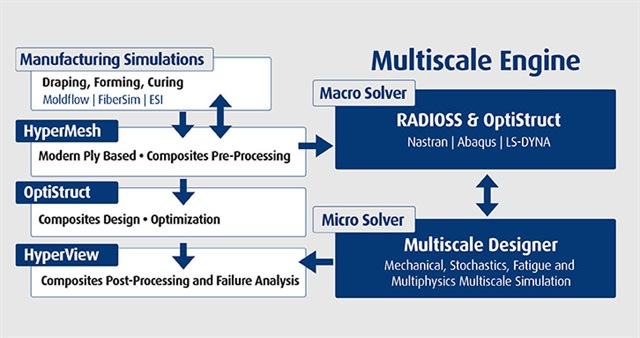Srki1982
Mechanical
- Oct 5, 2012
- 34
Hi,
I have a model that consist of both shell elements and solids and I work with (mm) scale. I have made it very simple with connections and chosed glued connection between all my parts.
First, I run a Steady-State Heat Transfer analysis (min: 10 C - max: 100 C) and the temperature distrubution looks reasonable. Second I run a Linear Static analysis and I receive highest stress 110 MPa. This looks also OK. In my third analysis I apply a nodal temperature load on my complete model from the Steady-State Heat Transfer analysis and the highest stress is now 800 MPa located on a solid which before had only 15 MPa. My material is EN 1.4404 stainless steel with following data:
Youngs module E: 200000,
Poisson's Ratio, nu: 0,27
Expansion Coeff, a: 1,728E-5
Conductivity, k: 0,015
Specific Heat, Cp: 500000
Mass Density: 7,9E-9
Reference Temp: 20
Body load is active with gravity 9810 mm/s2.
Thermal in body load is also active with default temperature: 20 C
The shell element stresses are OK and are all bellow the maximum allowable according to Eurocode. The only strange thing here is that the temperature load creates very high stresses in areas where it should not be. What can be wrong here? Does anyone have a solution / tips on this problem?
Thank you in advance!
Regards
I have a model that consist of both shell elements and solids and I work with (mm) scale. I have made it very simple with connections and chosed glued connection between all my parts.
First, I run a Steady-State Heat Transfer analysis (min: 10 C - max: 100 C) and the temperature distrubution looks reasonable. Second I run a Linear Static analysis and I receive highest stress 110 MPa. This looks also OK. In my third analysis I apply a nodal temperature load on my complete model from the Steady-State Heat Transfer analysis and the highest stress is now 800 MPa located on a solid which before had only 15 MPa. My material is EN 1.4404 stainless steel with following data:
Youngs module E: 200000,
Poisson's Ratio, nu: 0,27
Expansion Coeff, a: 1,728E-5
Conductivity, k: 0,015
Specific Heat, Cp: 500000
Mass Density: 7,9E-9
Reference Temp: 20
Body load is active with gravity 9810 mm/s2.
Thermal in body load is also active with default temperature: 20 C
The shell element stresses are OK and are all bellow the maximum allowable according to Eurocode. The only strange thing here is that the temperature load creates very high stresses in areas where it should not be. What can be wrong here? Does anyone have a solution / tips on this problem?
Thank you in advance!
Regards




